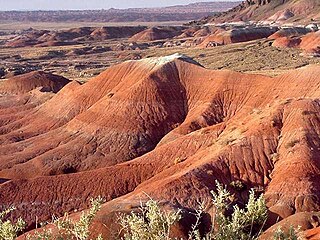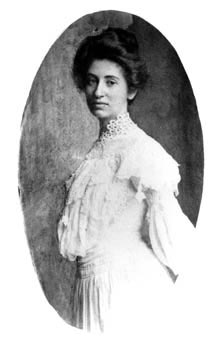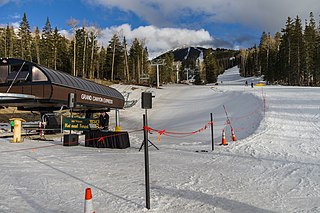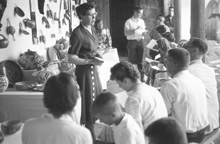Related Research Articles

Flagstaff is a city in, and the county seat of Coconino County, Arizona, in the southwestern United States. As of the 2020 United States census, the population was 76,831.

The Hopi are Native Americans who primarily live in the southwestern United States. The majority are enrolled in the Hopi Tribe of Arizona and live on the Hopi Reservation in northeastern Arizona; however, some Hopi people are enrolled in the Colorado River Indian Tribes of the Colorado River Indian Reservation at the border of Arizona and California.

Tuba City is an unincorporated town in Coconino County, Arizona, on the Navajo Nation, United States. It is the second-largest community in Coconino County. The population of the census-designated place (CDP) was 8,611 at the 2010 census.

The Painted Desert is a United States desert of badlands in the Four Corners area, running from near the east end of Grand Canyon National Park and southeast into Petrified Forest National Park. It is most easily accessed from the north portion of Petrified Forest National Park. The Painted Desert is known for its brilliant and varied colors: these include the more common red rock, but also shades of lavender.
Indigenous peoples of Arizona are the Native American people who currently live or have historically lived in what is now the state of Arizona. There are 22 federally recognized tribes in Arizona, including 17 with reservations that lie entirely within its borders. Reservations make up over a quarter of the state's land area. Arizona has the third largest Native American population of any U.S. state.

Northern Arizona is an unofficial, colloquially-defined region of the U.S. state of Arizona. Generally consisting of Apache, Coconino, Mohave, Navajo, and Gila counties, the region is geographically dominated by the Colorado Plateau, the southern border of which in Arizona is called the Mogollon Rim.

Mary Elizabeth Jane Colter was an American architect and designer. She was one of the very few female American architects in her day. She was the designer of many landmark buildings and spaces for the Fred Harvey Company and the Santa Fe Railroad, notably in Grand Canyon National Park. Her work had enormous influence as she helped to create a style, blending Spanish Colonial Revival and Mission Revival architecture with Native American motifs and Rustic elements, that became popular throughout the Southwest. Colter was a perfectionist, who spent a lifetime advocating and defending her aesthetic vision in a largely male-dominated field.

The Hopi Reservation is a Native American reservation for the Hopi and Arizona Tewa people, surrounded entirely by the Navajo Nation, in Navajo and Coconino counties in north-eastern Arizona, United States. The site has a land area of 2,531.773 sq mi (6,557.262 km²) and as of the 2000 census had a population of 6,946.

Arizona Snowbowl is an alpine ski resort in the southwest United States, located on the San Francisco Peaks of northern Arizona, fifteen miles (24 km) north of Flagstaff. The Snowbowl ski area covers approximately one percent of the San Francisco Peaks, and its slopes face west and northwest.
XIT is a Native American rock band that released two albums in the 1970s on the Rare Earth label.

Michael Kabotie, also known as Lomawywesa was a Hopi silversmith, painter, sculptor, and poet. He is known for his petroglyph and geometric imagery.
KUYI 88.1 FM, is a Native American Public Radio station in Keams Canyon, Arizona. The station, founded in 2000, primarily features locally produced programming for the Hopi, Tewa, and Navajo Native American tribal residents, surrounding communities in Northern Arizona, the Four Corners areas and streaming worldwide. Other network programming is provided by Native Voice One. Top of the hour news updates from National Public Radio are aired Monday through Friday. Its musical programming is a mix of traditional Hopi and modern music.

Fred Kabotie was a celebrated Hopi painter, silversmith, illustrator, potter, author, curator and educator. His native name in the Hopi language is Naqavoy'ma which translates to Day After Day.
Polacca is an unincorporated community in Navajo County, of northeastern Arizona, United States. It is Hopi-Tewa community on the Hopi Reservation.

Art of the American Southwest is the visual arts of the Southwestern United States. This region encompasses Arizona, New Mexico, and parts of California, Colorado, Nevada, Texas, and Utah. These arts include architecture, ceramics, drawing, filmmaking, painting, photography, sculpture, printmaking, and other media, ranging from the ancient past to the contemporary arts of the present day.

Mary-Russell Ferrell Colton was an American artist, author, educator, ethnographer, and curator. She is one of the principal founders of the Museum of Northern Arizona. She was a member of the Philadelphia Ten, exhibiting at the group's annual shows from 1926 to 1940. She was also a member of the National Association of Women Painters and Sculptors, the American Watercolor Society, and the American Federation of Arts. She is known for her advocacy of the arts, Native American rights, and women's rights. For her advocacy of Native American arts, she received a certificate of appreciation from the United States Department of the Interior, Indian Arts and Crafts Board in 1935. In 1982, she was inducted into the Arizona Women's Hall of Fame.

Katharine Bartlett (1907–2001) was an American physical anthropologist who worked from 1930 to 1952 as the first curator of the Museum of Northern Arizona, cataloging and organizing the museum's holdings, and then as the museum's librarian until 1974 and archivist until 1981. She participated in a survey of the Navajo Nation's reservation in the Little Colorado River basin and established the cataloging system used by the Glen Canyon Archaeological Project. She was a Fellow of the American Association for the Advancement of Science, a Fellow of the American Anthropological Association and a Fellow of the Society of American Archaeology, as well as the first Fellow of the MNA. Honored in an exhibit of the Smithsonian Institution in 1986 and a recipient of the 1991 Sharlot Hall Award for her contributions to Arizona history, she was posthumously inducted into the Arizona Women's Hall of Fame in 2008.
The World Championship Hoop Dance Contest is an annual American Indian and Canadian First Nations hoop dancing competition held at the Heard Museum in Phoenix, Arizona.

Albert Yava (1888–1980) was a Hopi–Tewa autobiographer and interpreter. Born in Tewa Village on First Mesa, Arizona, in 1888 to a Hopi father and a Tewa mother, Yava's given name was Nuvayoiyava, meaning Big Falling Snow. He attended primary school in Polacca, Arizona, at a time when compulsory education at US government-run schools was a controversial topic in the Hopi community. Teachers at the school shortened his name to Yava and added the familiar name Albert, both of which names he used for the remainder of his life. Yava subsequently attended boarding school in Keams Canyon, Arizona and spent five years at the Chilocco Indian School in Oklahoma.
References
- 1 2 3 4 Mimiaga, Jim. "Dolores hosts reggae band with a Native American message". The Journal. Retrieved 2023-10-03.
- ↑ Tha 'Yoties: Don't Worry Be Hopi , retrieved 2023-10-03
- ↑ Don't Worry Be Hopi , retrieved 2023-10-03
- ↑ "IrieZona Raggae Rockout". Flagstaff365.com. Retrieved 2023-10-03.
- ↑ Reporter, BRADY WHEELER Sun Staff (2021-08-10). "Indigenous benefit concert takes aim at Flagstaff city officials". Arizona Daily Sun. Retrieved 2023-10-03.
- ↑ "Rumble on the Mountain 7 Tickets". August 7, 2021.
- 1 2 The Museum of Northern Arizona Fall Newsletter.
- 1 2 "Tha 'Yoties XIT Tribute". Flagstaff365.com. Retrieved 2023-10-02.
- 1 2 Sickler-Voigt, Debrah C. (2023-04-11). STEAM Teaching and Learning Through the Arts and Design: A Practical Guide for PK–12 Educators. Taylor & Francis. ISBN 978-1-000-85757-3.
- ↑ Hopi / Tewa edu-tainer activist, Ed Kabotie, insightful teachings and experiences , retrieved 2023-10-02
- ↑ "Grand Canyon National Park - Ed Kabotie is the grandson of Fred Kabotie, the artist who painted the murals on the second floor of the Watchtower in 1932. | Facebook". www.facebook.com. Retrieved 2023-10-02.
- ↑ "Grand Canyon National Park - Hopi musician and artist Ed Kabotie playing flute music for an audience in the Watchtower. | Facebook". www.facebook.com. Retrieved 2023-10-02.
- 1 2 3 "Native American band shares rock, reggae and history at CMC". Hi Desert Star. 2023-09-19. Retrieved 2023-10-02.
- ↑ "Ed Kabotie and 'Tha Yoties will play and sing at Hopi Fest this weekend". Navajo-Hopi Observer News. Retrieved 2023-10-03.
- ↑ "An AlterNative History of America". Flagstaff365.com. Retrieved 2023-10-03.
- ↑ "'Tha Yoties' new tour brings attention to Indigenous people, lands of Colorado Plateau". Navajo-Hopi Observer News. Retrieved 2023-10-02.
- ↑ "DC | Native Voices of the Grand CanyonOCTOBER 1, 2023, 1 – 4:30 PM". National Museum of the American Indian. Retrieved 2023-10-02.